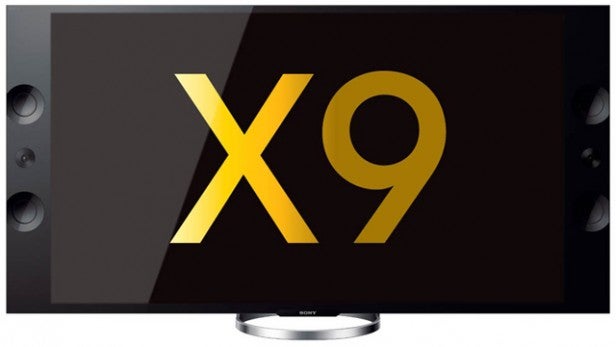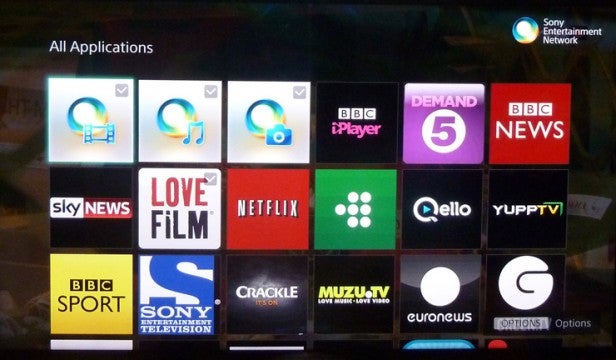Sony KDL-55X9005A Review
Sony KDL-55X9005A
Another day, another sublime 4K TV, and the prices keep coming down, too.
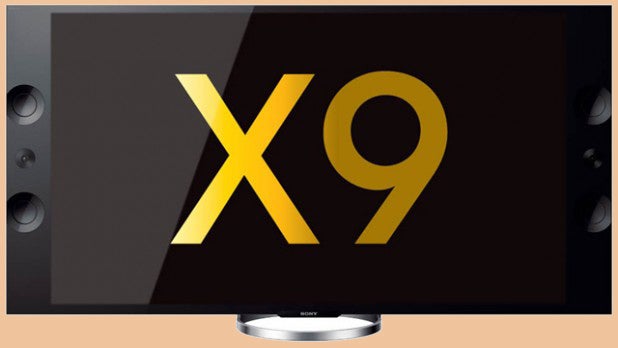
Sections
- Page 1 Sony KDL-55X9005A Review
- Page 2 Picture Quality Review
- Page 3 3D, Sound and Verdict Review
Verdict
Pros
- Stunning UHD and upscaled picture quality
- Class-leading audio
- Fair price for what's on offer
Cons
- Needs care to get good contrast
- Very little native 4K content at time of writing
- Doesn't carry true HDMI 2.0 inputs
Key Specifications
- Review Price: £3300.00
- 55-inch LCD TV with edge LED lighting
- 4K native resolution
- Local dimming technology
- passive 3D playback with 4 pairs of glasses included
- Smart TV platform with online video and DLNA support
What is the Sony KDL-55X9005A?
The Sony 55X9005A is a 55-inch TV with a native 4K/UHD resolution. Which makes it, tellingly, the third 4K video display we’ve tested in less than a week and an increasing sign that manufacturers continue to push a 4K future, particularly at the top-end of the TV market. The 65-inch Sony 65X9005A has already met with out approval, so we expect similarly excellent things from this TV.
SEE ALSO: What is 4K? 10 reasons why you should care
Sony KDL-55X9005A: Design and Features
No other TVs around today look quite like Sony’s X9005A series. For starters they’re absolutely huge, gleefully flying in the face of the modern obsession with ‘barely there’ frames. Bold, black glass-finished wings stretch far beyond the left and right sides of the 55X9005A’s 55-inch screen, giving the set a monumental presence as imposing as the enigmatic and emblematic black monoliths in 2001: A Space Odyssey.
There’s a good reason for the unusual size, too. Sony has used the extra width to fit the 55X9005A with a fantastically potent speaker array by flat TV standards, comprising three front-firing drivers gorgeously integrated into the bodywork. What’s more, as well as firing forwards (most flat TV speakers fire down) for more attack and clarity, the speakers in the Sony 55X9005A use Sony’s recent magnetic fluid innovation to deliver more power and range from the sort of limited cabinet space you inevitably get with slim TVs.
Despite its Space Odysseyesque looks, we can’t promise that owning a 55X9005A will suddenly take you and your family Space Odyssey-style to a new human evolutionary level. What we can promise, though, is that the 55X9005A will take your TV picture quality to the next evolutionary level, thanks to the 3840 x 2160 pixels it manages to fit into its 55-inch screen area. This is four times as many pixels as you get in a normal 1920 x 1080 HD TV.
Whether you call the 55X9005A’s vast pixel count 4K (as Sony wants you to) or UHD (as most other brands want you to) is up to you. What’s not up for debate so far as we’re concerned, though, is the impact 4K/UHD resolutions can have on picture quality.
ROUNDUP: Best 4K TVs
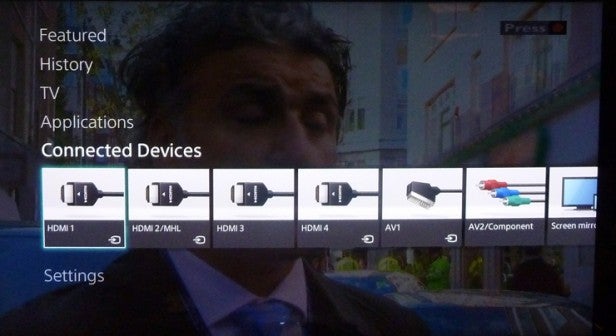
There do remain, though, questions over when native 4K content is
going to arrive in force, and whether the advantages of 4K are readily
apparent on anything less than super-huge (as in, bigger than 55-inch)
TV screens.
Sony’s spec sheet for the 55X9005A, though, suggests that if any TV should be in a position to address at least the latter of these two questions it’s this one. For starters its picture credentials are instantly bolstered by its use of one of Sony’s top-line local dimming edge LED systems. Experience has shown that while Samsung’s F9000 models run it close, Sony currently delivers the most effective local dimming performance in the edge LED world.
Also extremely promising is the 55X9005A’s use of Sony’s new Triluminos Quantum Dot colour technology. This uses light-emitting nano-particles to produce coloured light, resulting in a much wider colour gamut than you get with conventional LCD colour technology (which passes a white backlight through red, blue and green filters). This could prove invaluable in helping to get the ultimate precision out of the extra resolution 4K has to offer. After all, in providing more pixels 4K pictures can also contain more colour resolution, so the better equipped a TV is to handle this the more likely we are to fully appreciate this oft-ignored 4K benefit.
Experience suggests that Sony’s Reality Creation picture engine should also have a significant role to play in the 55X9005A’s 4K story. As native 4K sources are currently all but non-existent outside of the demo reels we’ve managed to stitch together from assorted manufacturers’ archives, upscaled HD is going to make up the majority of your viewing time. And Reality Creation has shown itself before to be unusually accomplished at the enormously difficult task of adding sufficient new pixels of picture information to convert HD to 4K.
The 55X9005A’s 4K resolution should also come in very handy indeed when it comes to 3D. For by combining its 2160 native lines with the passive 3D format it will be able to deliver passive 3D’s advantages of no flicker and minimal crosstalk without you having to suffer the compromised horizontal resolution you get with normal HD passive 3D TVs.
Shifting our focus from the 55X9005A’s 4K stuff, the set also carries Sony’s latest online/smart functionality, supporting file streaming from connected DLNA PCs, file playback from the USB stick, NFC connection support with compatible devices (like Sony’s Xperia phones) and access to Sony’s SEN web content. This includes a decent (though not comprehensive) suite of video services, including the BBC iPlayer, Demand 5, Netflix, LoveFilm and Sony’s own Video Unlimited platform.
There’s no support for multi-screen playback though (as in, squirting tuner programming out to a smartphone or tablet), and the onscreen interface is a little primitive by modern standards. Check out our dedicated Sony Smart TV 2013 review for more information.
As you would expect, the Sony 55X9005A is equipped with a huge array of picture fine-tuning tools – though it must be added that not all of these are presented in a ‘standard’ way, and that Sony hasn’t sought the endorsement of either the THX or ISF third-party groups. Options available include a colour management system, gamma controls, multiple noise reduction tools, a huge array of themed picture presets, and even a welcome degree of control over Sony’s 4K upscaling engine.
One last point to discuss where the 55X9005A’s features are concerned is its HDMI spec. None of the four provided are built to the full new HDMI 2.0 spec sported – currently exclusively – by the Panasonic L65WT600 UHD TV. This means they can’t handle the 18Gbps throughputs necessary to deliver native 4K sources at 50/60Hz and carrying full 4:4:4 colour subsampling. However, Sony has formally declared that the HDMIs on the 55X9005A will be able to handle 50/60Hz 4K sources – just with a lower colour resolution (such as 4:2:0).
Sony KDL-55X9005A: Set Up
The 55X9005A does a reasonably good job of hand-holding you through its initial installation processes, and its graphics-rich menus are a big improvement on those witnessed on past Sony TV generations.
Getting the best performance out of the 55X9005A is a slightly complicated process, though. First, as usual when watching 4K, we’d recommend that you turn off all noise reduction circuits, and with 2D 4K, at least, you get the cleanest results with motion processing turned off as well.
When you’re watching upscaled HD, we’d still recommend leaving the noise reduction systems turned off, and that you calm the sharpening element of Sony’s Reality Creation engine to as low as its 20-25 level so that pictures look less noisy at the cost of only a marginal reduction in sharpness. 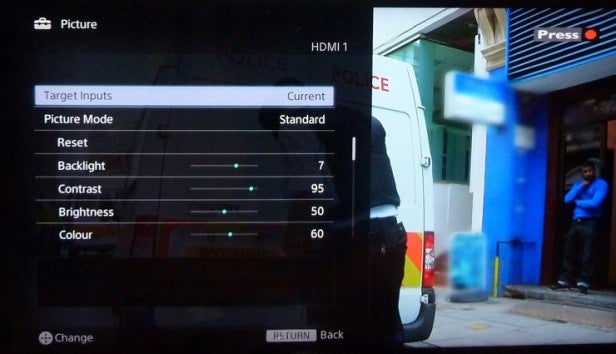
You can try the Clear and Clear Plus motion processing options with upscaled broadcast footage, though we still tended to leave it off for Blu-ray viewing.
The last really key 55X9005A picture set up tools you should definitely get involved with are its contrast controls. For reasons we’ll discuss in the performance section, you need to be quite careful with the set’s various contrast boosting tools. Our preferred combination ended up being leaving the Black Corrector set to low, the Advanced Contrast Control to Low, and the LED Dynamic Control set to low.
How we test televisions
We test every TV we review thoroughly over an extended period of time. We use industry standard tests to compare features properly. We’ll always tell you what we find. We never, ever, accept money to review a product.

